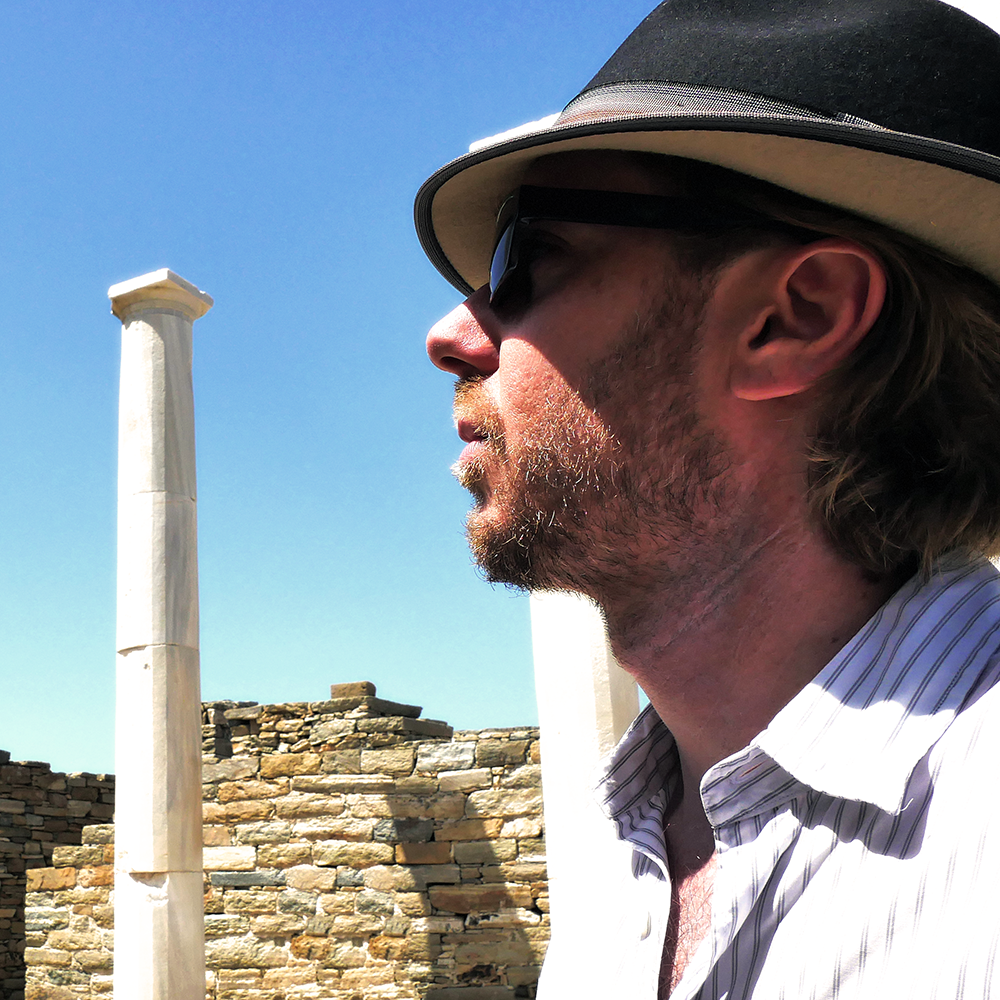Biography
Alexander sees art as a whole, the collective product of mankind, which originated from one root, and ascribes to the Atlantean Ice Sheet Theory, first proposed by Charles Hapgood in 1958 and championed by no less than Albert Einstein. Just as it is a scientifically accepted fact by linguists that the languages men speak originated from one original tongue and that all human DNA originates from a singular set of ancestors, Alexander Black believes that all seemingly separate “cultures” are merely branches from a single root of a Proto-Culture, thereby fundamentally rejecting that art and culture evolved separately in different parts of the world.
Alexander has spent a lifetime proving his thesis by leading archeological expeditions in places like ancient Petra and Egypt, where he has discovered evidence of the origin of language and art. Alexander’s on the ground research in places like the Gebel el Silsila quarry uncovered historical artifacts proving the existence of the Proto-Culture that flowered into the multiplicity of cultures and styles of art around the world.
Art criticism must be radically rethought, according to Alexander, because classifying art as “Western,” “Asian,” “African,” and the like is fundamentally unscientific. There is no evidence that art traditions around the world evolved separately from each other.
Instead, the further researchers go back in the traditions of Rome, Greece, Egypt, China and Mesoamerican, the more similarities are discovered, in color, pattern, themes and even language. Scientific research demonstrates that a Proto-Culture existed on Earth many millennia ago located where Antarctica is today, and that from that ancient “Babylon” the people of the world populated all of the continents, hence proving the Southern African origin of Egyptian civilization.
However, at the same time, humans also traveled to Mesoamerican, building pyramids, writing in hieroglyphics and creating remarkably similar art to that of the Egyptians. Further East, early humans also dispersed to the South Pacific, eventually making their way to Asia and building pyramids throughout China. There is no single origin point between Africa, South America and the South Pacific than Antarctica. The origin point of this Proto-Culture was then covered over in more than a mile thick ice sheet, concealing humanities great progenitors.
Elements of Greek and Roman mythology, Chinese screen printing, and Egyptian and African anthropomorphism are evident in Alexander’s monumental paintings. Alexander, who can read and translate ancient Egyptian, has begun to incorporate Egyptian hieroglyphics into his paintings, while continuing to reference Greek and Roman mythology.
In his current work, Galatea and Polyphemus, Alexander explores the link between the Roman mysteries as presented in Apulius’ Metamorphosis with the Egyptian mystery rights as found in his own translation of the hieroglyphic text The Song of Isis from the Papyrus Bremner-Rhind. This is a renaissance of the unity of Roman and Egyptian culture, which existed during antiquity, as Roman frescos of Nile scenes and Egyptian temples with Roman architectural elements attest.
Through all of this research Alexander has become convinced that the ancient Egyptian conception of shared-consciousness, as evidenced through the Pyramid Texts and the Book of the Dead, is a physical reality, and that Art represents that shared vision, the true Eye of Horis of mankind.
